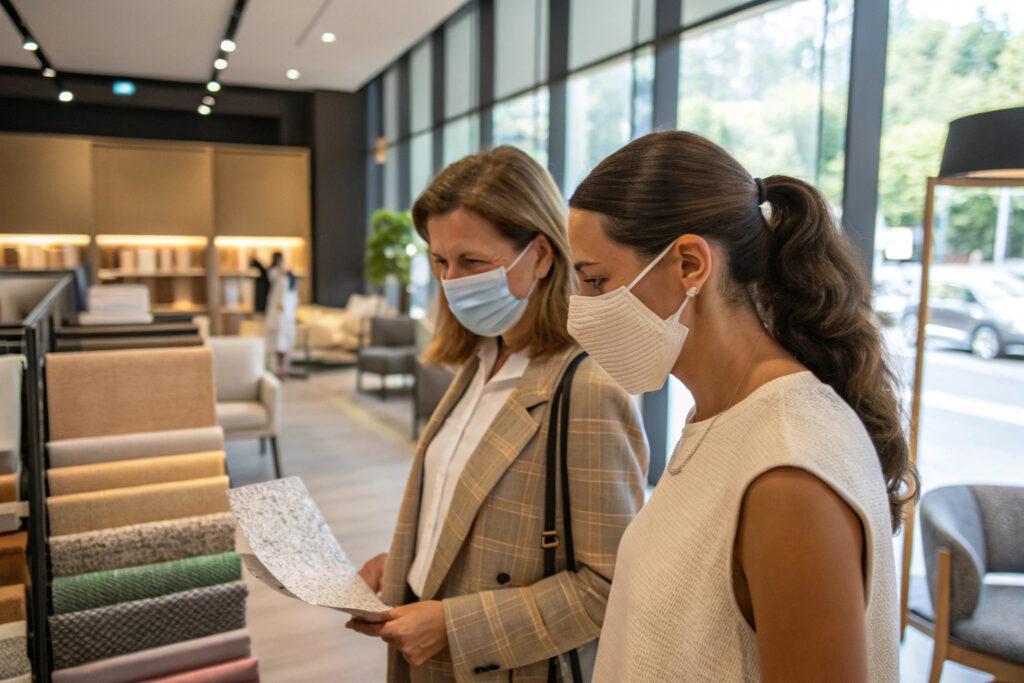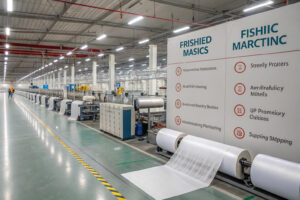Summer heat and fabric masks can be a frustrating combo—sweaty, stuffy, and hard to breathe through. Many buyers worry that wearing cloth masks in hot weather means sacrificing comfort for safety. If your customers frequently complain about stuffy face masks or if you’re in the business of importing breathable cloth masks from China, it’s time to rethink your fabric selection.
Yes, not all fabrics are created equal—especially when it comes to airflow. Certain textiles offer much higher breathability while still providing comfort, washability, and protection. That’s why top global buyers, from U.S. importers to EU-based eco-brands, pay close attention to fabric choice when ordering face coverings for summer.
If you want your mask collection to stand out, knowing which breathable materials to prioritize is the first step. In this article, I’ll break down the most popular lightweight, air-permeable fabrics used in our masks, and how they’re helping buyers like Ron from the U.S. win over summer shoppers.
Which Fabrics Offer the Best Breathability in Summer?
Summer mask sales can quickly stall if the end user finds it hard to breathe. That’s where the fabric matters most. For importers and DTC brands alike, choosing breathable options can make or break your seasonal performance.
Cotton, bamboo, and mesh fabrics consistently lead the market as the most breathable materials for summer masks. These are the go-to options we recommend for warm-weather face coverings due to their cooling effects, air permeability, and ability to stay soft against the skin.
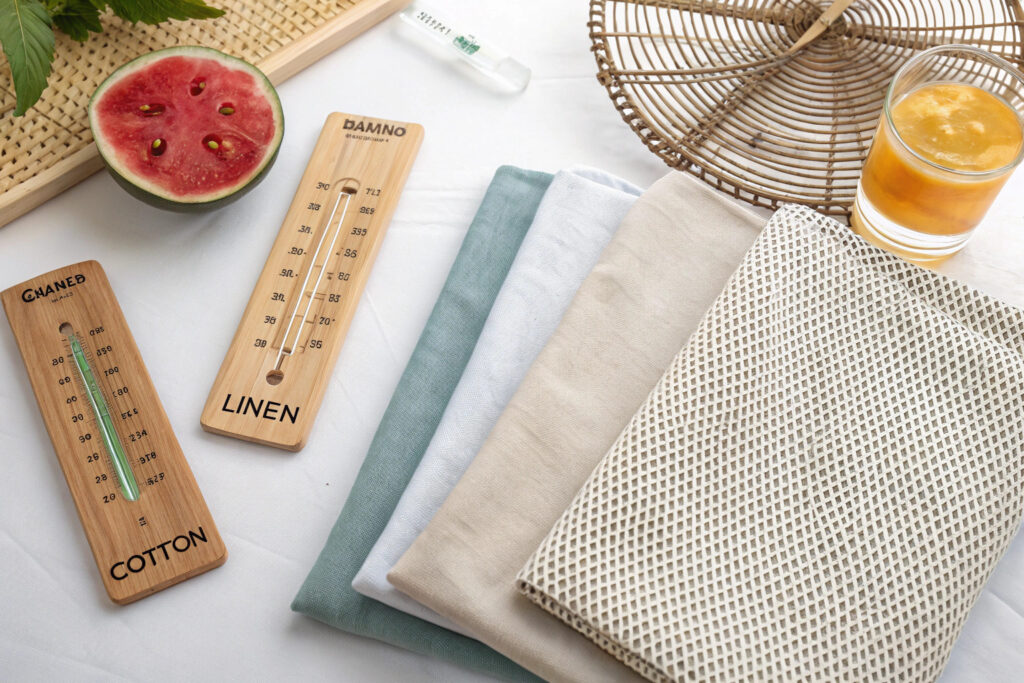
Why Is Cotton Still the Most Trusted Material?
Cotton remains king for a reason. Especially when woven into lightweight single-jersey or poplin, cotton allows heat and humidity to escape, keeping the wearer comfortable even in prolonged outdoor use. Our clients who retail in hot climates—like Arizona or Southern Spain—frequently opt for cotton masks due to their versatility and customer approval.
Even global health organizations recognize cotton’s breathability. According to a CDC mask material guide, tightly woven cotton is among the most recommended fabrics for washable masks.
Another perk? Cotton can be easily enhanced with cooling finishes or combined with a soft inner lining like modal, offering improved comfort without compromising airflow.
How Does Bamboo Fabric Outperform in Hot Climates?
When it comes to natural fiber innovation, bamboo viscose stands out. This fabric not only wicks moisture but also has thermoregulating and antimicrobial properties—ideal for summer conditions and extended wear.
Compared to cotton, bamboo masks can feel noticeably cooler and are often more appealing to eco-conscious buyers. Our U.S. customers often request GRS-certified bamboo blends for private label orders.
You can check out this detailed bamboo vs. cotton comparison that confirms why more mask manufacturers are pivoting to bamboo for hot-season collections.
Is Mesh Fabric a Safe Option for Mask Breathability?
Mesh fabrics spark controversy. On the one hand, they’re exceptionally breathable; on the other, they can compromise filtration. That’s why we only recommend them in multi-layered or hybrid designs that include a filtering or cotton layer beneath the mesh outer shell.
Mesh is a top seller for athletic and fashion masks designed for summer use, especially in our KN95-style and gaiter ranges.
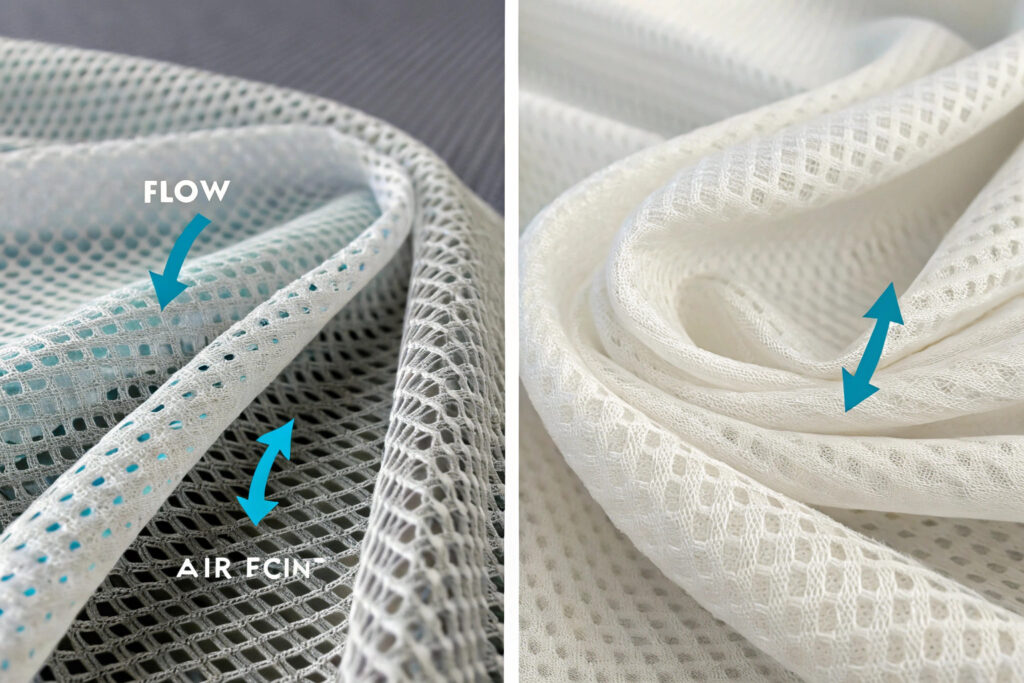
When Is Mesh Fabric Appropriate for Face Coverings?
Mesh is particularly popular among athletes and users who require frequent ventilation, like bikers or outdoor workers. We usually produce mesh masks with an internal non-woven polypropylene layer or cotton gauze to ensure protection without suffocation.
To balance comfort and compliance, some clients request 3D spacer mesh with open hexagonal structures. You can explore mesh layering strategies in this guide.
Another pro tip? Use mesh on the outer layer only—this satisfies both aesthetic and airflow goals while protecting the core layers.
Are There Certifications Required for Mesh Mask Layers?
Absolutely. If mesh is used, especially for export to the U.S. or EU, it’s essential to ensure your product meets basic textile testing standards like Oeko-Tex or GB 18401. We help our buyers pass testing via verified in-house QC and lab collaboration.
To understand more about breathable materials and test standards, check this textile test explainer by Intertek.
What Are the Pros and Cons of Linen in Summer Face Masks?
Linen is one of the oldest and most breathable natural fibers. However, it’s also one of the most misunderstood when it comes to mask applications. Some buyers love its summery texture, while others worry about wrinkling or coarse touch.
Linen-blend masks offer a solid alternative to all-cotton ones, especially when layered properly. They bring rustic fashion appeal while enhancing airflow naturally.
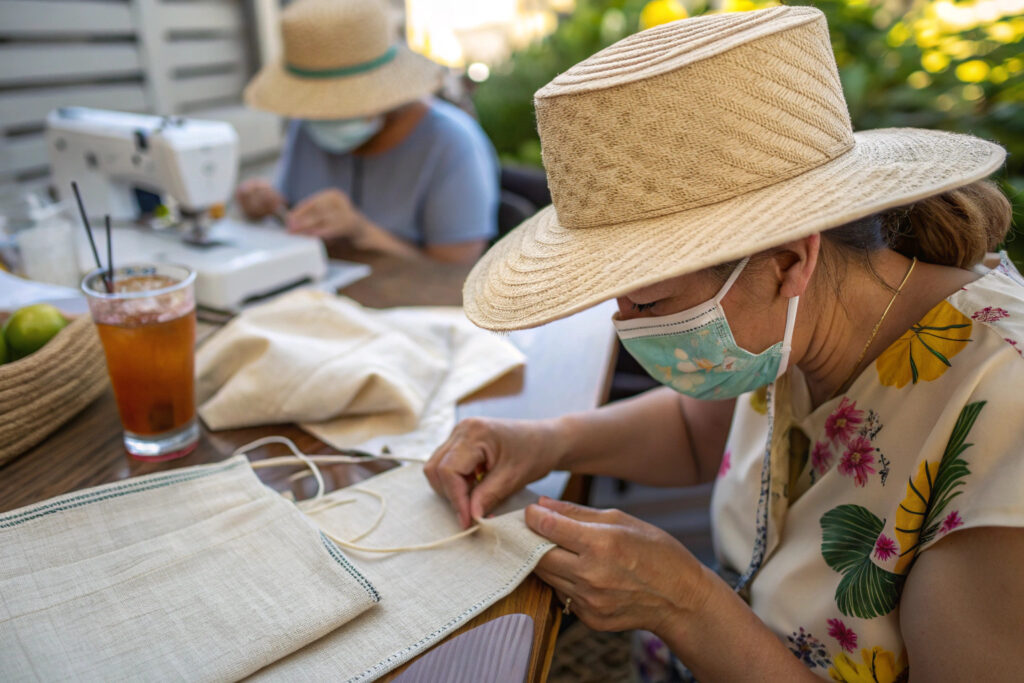
What Makes Linen a Smart Choice for Hot Climates?
The key feature of linen is air porosity. This makes it ideal for warm, dry weather. For example, in Russian and Eastern European orders, linen face masks spike in demand between April and August.
Linen dries fast, which is great for reusable designs. Plus, many buyers appreciate that linen is biodegradable, making it a better fit for sustainability-focused orders.
According to Good On You’s eco-rating, linen ranks high in environmental sustainability, especially when compared to synthetic options.
How Can We Avoid Linen’s Common Drawbacks?
We typically advise clients to use linen in a blend format, such as linen-cotton or linen-rayon, to balance breathability and softness. Adding a bamboo inner lining can dramatically enhance skin comfort without increasing cost significantly.
We also offer enzyme-washed linen, which helps soften the texture and reduce shrinkage. Here’s a helpful primer on enzyme-washed fabrics.
Can Synthetic Fabrics Be Breathable and Summer-Ready?
Synthetic doesn’t always mean stuffy. With the right weave and finishing, polyesters and nylon blends can surpass natural fabrics in performance categories like moisture-wicking, odor control, and stretch.
We’ve developed multiple summer mask lines based on functional polyester blends, especially for our sports and outdoor brand clients in California and Florida.
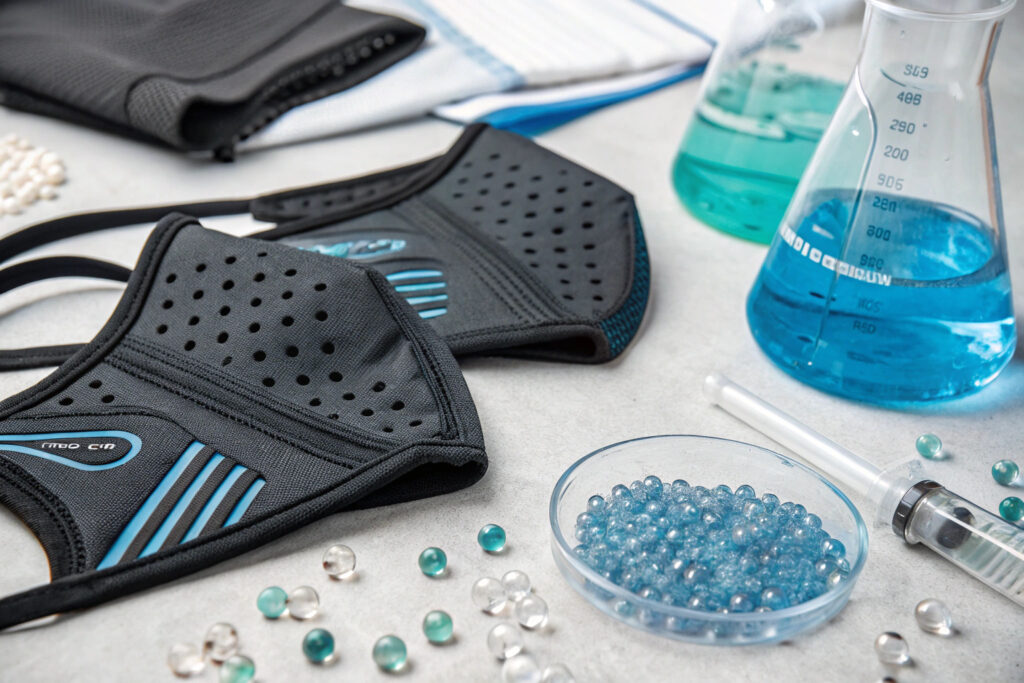
What Are the Best Synthetic Options for Hot Weather?
The top synthetic picks are polyester-spandex blends, often found in activewear. These materials dry quickly and allow strategic stretch while still being washable and durable.
Many buyers also ask about Coolmax® polyester, which enhances moisture evaporation. This Coolmax feature guide shows how it works in various summer-use cases, including masks.
If softness is a concern, we recommend double-brushed polyester or adding a cotton liner inside. This way, buyers get the best of both comfort and performance.
How Do Synthetic Mask Fabrics Handle Odor and Bacteria?
Advanced polyester knits can be treated with antibacterial finishes that actively fight sweat-related bacteria. These are common in our athletic mask models used by gyms and summer camps.
We often use Silvadur™ antimicrobial treatments on synthetic layers. Learn more about it from this DuPont Silvadur info page.
Just make sure your target market approves of treated synthetics—some retailers, especially in Germany or Denmark, require documentation for all finishes.
Conclusion
From cotton to bamboo, mesh to linen, breathable fabric choice directly shapes customer comfort and sales success in summer mask categories. The winning formula often involves a smart blend of comfort, function, and verified compliance, tailored for your market’s climate and regulations.
At Shanghai Fumao, we help importers like Ron navigate seasonal trends and choose the right breathable fabrics backed by performance testing and scalable production. Ready to develop your next fabric mask collection for summer? Reach out to our Business Director Elaine at elaine@fumaoclothing.com and let’s bring your idea to life.

